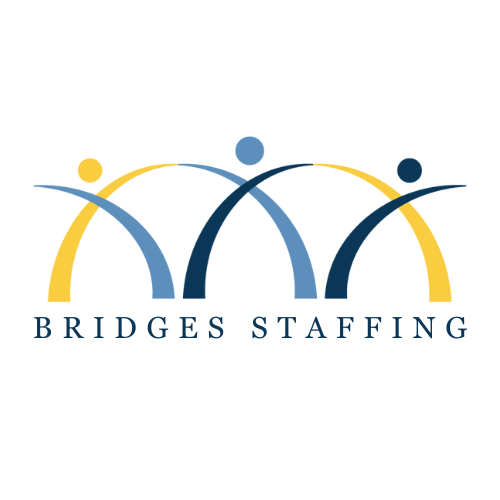The moment you start looking for jobs, the resume becomes one of the most important tools in your arsenal. This serves as a recruiter or employer’s first touchpoint with you, so it’s your big chance to make an impression and land an interview. With all the tough competition in the job market today, knowing how to make a professional resume can make all the difference.
So to help you through this step, here’s a guide walking you through the steps on how to write a resume—even without any experience! We’ll also address common questions like the right skills to put on a resume, what a resume should look like, and other concerns.
Contents
How to Write a Resume with No Experience
It’s understandable to feel intimidated if you’re writing a resume with no experience. The reality is that you can spend hours making it, only for employers to spend seven seconds looking at it. So to make sure you catch their attention in that short time, here are key steps on how to write a resume for a job with no experience.
Choose the right format
Before anything else, you’ll need to choose a resume format since this is the first thing that recruiters will notice. The right type ultimately depends on how much experience you have and what job you’re applying for.
- Reverse Chronological. With this format, you write your most recent work experiences first. It’s the most popular resume format and best used when you have plenty of relevant work experience. HR managers and recruiters also prefer this the most, so it’s considered the gold standard when writing resumes.
- Functional. This format is also called skills-based since it focuses more on your skills rather than your work history. It’s usually suitable for fresh graduates or job seekers trying to change industries. However, it’s also a risky choice since recruiters aren’t fond of the format and believe it covers gaps in a candidate’s experience.
Hybrid. The hybrid resume combines the first two formats. On top, you put your skills and accomplishments. Then at the bottom, you highlight your work history. It’s a great alternative to the functional resume if you’re trying to change careers but don’t want to make it look like you’re hiding gaps in your experience.
Come join the Bridges Staffing family. As one of the premier Charleston, SC employment agencies.
Use an organized and readable layout
Once you’ve chosen a format, you might be wondering—what should a resume look like? It’s best to use a simple resume template with basic colors like black or dark blue when applying for traditional industries. But for more creative industries like graphic design or PR, you can play around with the design more.
Generally, there’s no specific layout you should follow. However, it’s important to keep it organized, neat, and easy to follow. Here are some design tips to help you out:
- Make clear section headings with larger text
- Allocate enough white space to avoid cramming information
- Use an easy-to-read font like Arial and Cambria
- Keep the font size between 10 to 12 pt for body text
- Set even margins across all sides (ideally 1-inch)
Write your name and contact information
The top of your resume should have your name and contact information. The latter is particularly important since you want to make sure recruiters can reach you easily. Generally, your phone number, email address, and location should suffice. If applicable, you can also include information like your LinkedIn URL, personal blog, or online portfolio.
Browse open job opportunities here.
Add a resume objective
Creating a resume summary is usually a good way to sell yourself and make a good first impression quickly. But for fresh graduates or applicants planning to change careers, you can instead write a resume objective. This is a two to three sentence overview highlighting your career goals and convincing employers why you’re a good fit for the job.
Use numbers to highlight outcomes
It’s easy to write sentence after sentence of your past experience or responsibilities. However, what employers are most concerned about are the outcomes. In short, what were the results of your efforts?
Whenever possible, use hard numbers and data to quantify your accomplishments. For example, if you headed an event for school, you can include the number of people you led in your team and the number of attendees. Or if you spearheaded a fundraiser, write out how much you earned from the initiative.
Write your education details
Education details usually come after work experience. But if you’ve never worked before, you can place it first. For university degree holders, no need to mention high school details. You just need to write out your university and program name and the years you attended the school. Don’t forget to include Latin honors, if any, and your GPA if it’s at least 3.5.
Learn more: Why Does Working With a Staffing Agency Benefit Your Business?
Showcase your skills
The skills section is critical in resumes since this allows you to show employers why you qualify for a role. Generally, here are the main skills to put on a resume:
- Hard Skills. These are technical and measurable abilities that you usually get from education or training. Some jobs require specific skills for the role, so you should highlight these on your resume. For example, if you’re applying for a web developer position, some must-have hard skills include HTML, CSS, and JavaScript.
- Soft Skills. These are more of personality traits and interpersonal skills that describe your work ethic and how you interact with others. As surprising as it sounds, 97% of employers say that soft skills are just as important or even more important than hard skills.
Naturally, skills will vary per candidate, but it’s also useful to include “universal skills” that make you more competitive in all jobs. These include soft skills like leadership, teamwork, and communication, and hard skills like Excel and writing.
Include relevant keywords
98% of the Fortune 500 companies use an applicant tracking system (ATS) to screen resumes for high-volume applications. Even small companies are jumping on the bandwagon because it makes the recruitment process much easier. So, as an applicant, you’ll need to optimize your resume with relevant keywords to avoid missing out on opportunities.
To find keywords, you can scan through the job postings you’re interested in and look for important keywords or phrases in the job description or responsibilities. Take note of hard and soft skills, industry or company buzzwords, and other things you can include in your resume. Try to include keywords throughout different sections in the resume to make them easy to find.
Write a cover letter to complement your resume
It’s always helpful to submit a resume with a cover letter to increase your chances of getting accepted. It’s a great way to expound on how your experience, skills, and knowledge align with your desired role. It also allows you to talk about why you’d be a good fit for the company and why you want to fill the position.
Read also: How to Handle Job Rejection and Bounce Back Even Greater
FAQs about Writing a Resume for Job Applications
How long should my resume be?
Ideally, resumes should just be one-page long. The goal is to make them as short as possible while still highlighting the important information. In most cases, you should only go beyond the one-page rule if you have an impressive range of experience and achievements to showcase.
Do I need more than one version of my resume?
You don’t necessarily need many versions, but it’s also important to tailor your resume to the job you’re applying for. Generally, the best practice is to have a standard version of your resume with clear goals. Then, you can make slight changes in the skills and experiences you want to highlight.
What should I write if I don’t have relevant experience in the job I’m applying for?
If you have no relevant work experience, you can make up for it by highlighting your education, academic projects, and co-curricular activities. Writing a strong cover letter can also help increase your chances of appealing to recruiters.
Send Your Resume to Bridges Staffing for Top Job Opportunities
It can be challenging to learn how to write a resume, especially if you have no experience. So if you’re looking for a job, consider applying online with Bridges Staffing Agency. As a trusted recruitment agency, Bridges Staffing Agency can help connect you to employers seeking to hire professionals for their company.
If you’re interested in finding job opportunities, you can contact them at (843) 474-6826 or send them an email at info@bridgesstaffing.com.
Want to explore more options? Here are guides and tips for landing a job of your dreams.






